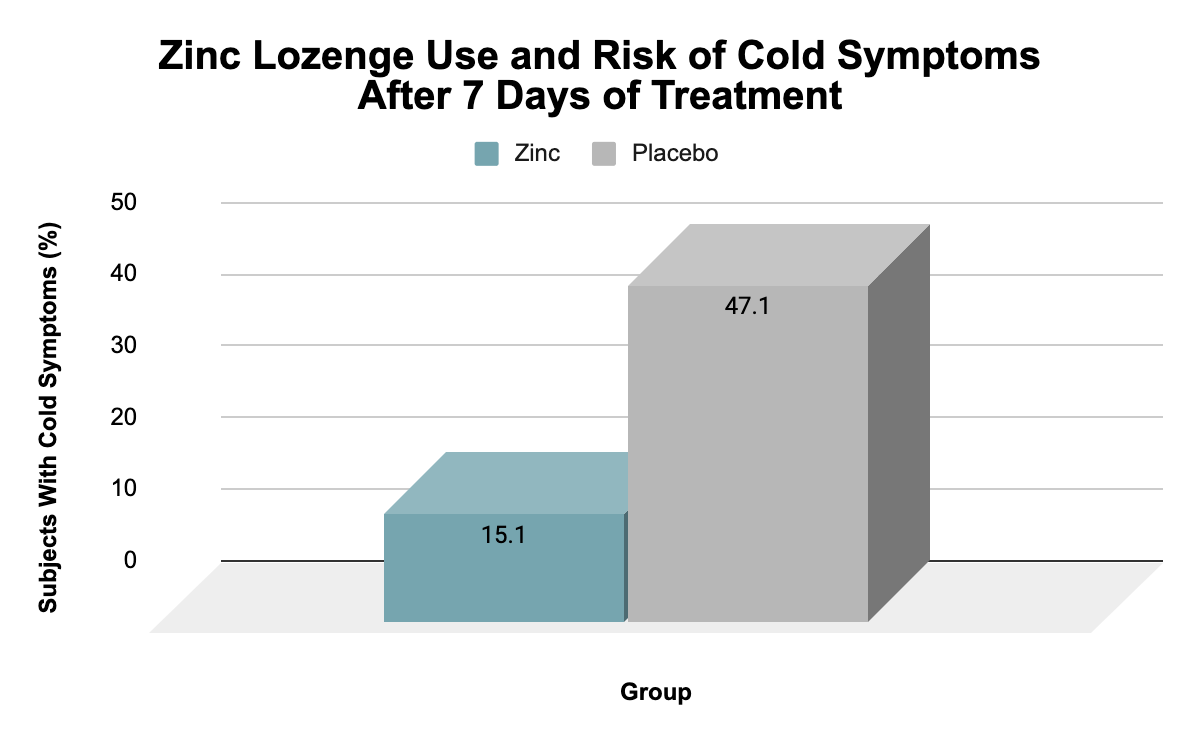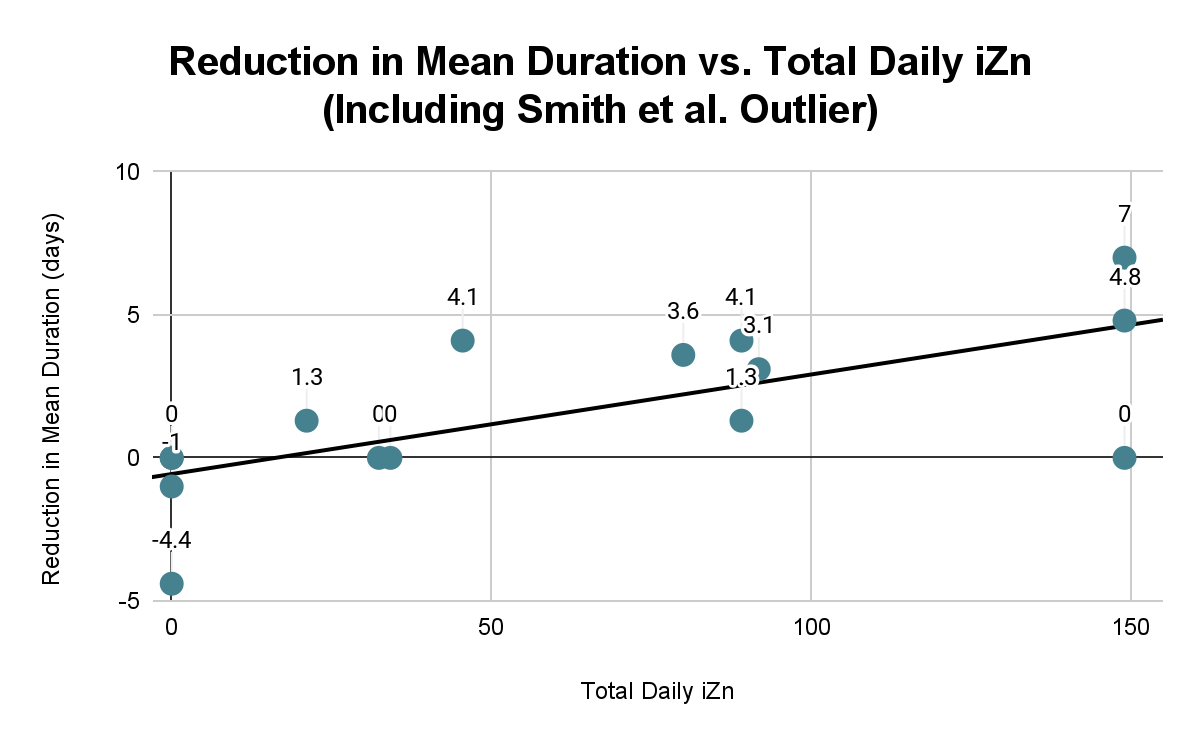Cutting Down Colds: The Zinc Zone
Shortcut to how zinc lozenges impact cold symptoms
Nobody likes being sick. From the clogged nostrils restricting your breathing (my personal favorite) to your throbbing throat screeching at you and the pulsating headache commandeering your attention, it just sucks. And, these colds are particularly annoying because it seems we don’t have much of a say in whether they assume control over much of our lives. At least, that was my perspective – that suffering from colds is an inevitable part of our lives that we can’t do much about – up until a recent dive into the research literature on zinc lozenges. Check out the details below to see why I’ll be stocking up on these dissolvables in preparation for any cold storms to come.
Friendly Disclaimer: I am not a doctor, and none of the information below is medical advice in any way, shape, or form. You are responsible for conducting your own research, consulting your medical professionals, and making your own decisions.
Bottom Line Up Front (B.L.U.F.)
Research suggests the following about zinc lozenge use and cold symptom duration and severity:
Trial results are inconsistent overall but show a more clear benefit to zinc lozenge use when looking at studies that used higher doses (≥75 mg/day), zinc acetate, and treatment within the first two days of cold symptoms. (III, IV, VI, VIII, X, XIII, XIV)
Meta-analyses of randomized-controlled trials show high-dose zinc lozenge treatment leads to ~20-44% reductions in cold symptom duration or 2+ fewer days with symptoms compared to placebo. (III, X, XIV)
These studies find a non-trivial amount of adverse effects following high lozenge use in both zinc and placebo groups, with these side-effects occurring more often in the zinc groups. Symptoms are mostly related to oral discomfort (i.e. dryness, irritation, after-taste, worsened taste of other foods) with some consisting of digestive complaints (i.e. diarrhea, abdominal pain, nausea, constipation) or headache. (III, V, VI, VII, VIII, XI, XIII, XIV, XV)
The origin story behind using zinc lozenges to treat common cold symptoms is an intriguing one, tying all the way back to the 1980’s, when a 3-year old girl with leukemia showed significant improvements in her cold symptoms after dissolving a zinc tablet in her mouth – an administration method her doctors only resorted to when the child refused to swallow the zinc tablet. (III, VIII)
This surprising happenstance provoked one of those doctors to test whether dissolvable zinc tablets affected common cold outcomes, an experiment that revealed a shocking 7-day reduction in duration of symptoms according to an exponential decay equation developed from the one-week trial data. (VIII) Since then, several randomized-controlled trials (RCTs) and reviews have experimented and explored the potential connection between dissolvable zinc supplementation – predominantly lozenges – and cold/infection outcomes. (III, IV, V, VI, VII, VIII, IX, X, XI, XII, XIII, XIV, XV, XVI)
These data are mixed, in that some studies show no impact, others show benefits, and a couple of outliers show detriments. (X, XIII, XIV, XV)
But, things clear up when dose is considered, in that it appears that higher quantities (≥75 mg/day) can significantly reduce both the duration and severity of symptoms, like nasal discharge, cough, headache, muscle aches, overall symptom score, etc.. (III, IV, VI, VIII, X, XIII, XIV) Notably, these studies show that zinc lozenge use can cut down cold timelines by ~20-44%. (III, IV, VI, VIII, X, XIII, XIV) From a practical point of view, one meta-analysis shows that this translates into decreasing colds by 2.75 days, with some studies showing reductions >3 days. (III, VII, XIII, XIV) Check out Figure 1 for a depiction of these data.

In addition, several studies show that high-dose zinc lozenge treatment leads to reduced symptom presence and severity at days 4-7 after starting use. (IV, VI, VIII, XIII, XIV) Specifically, the same review from above found that high dose zinc supplementation reduces absolute risk for having symptoms 7 days following starting usage from 47.1% to 15.1% (shown in Figure 2 below) – a relative risk reduction of 68%. (XIV). On the contrary, trials using lower doses (<75 mg/day) show inconsistent results, many entailing no improvements in cold symptom duration or severity. (III, V, XI, XII, XIV)

It appears that, in addition to the dosage, both the timing and type of zinc formula utilized matter, as zinc acetate lozenges tend to show superior results to other zinc compounds, and starting treatment earlier (i.e. on the first or second day of symptoms) trends towards greater benefits than delaying usage. (IV, X, XIV)
The question of zinc’s mechanism of action for reducing cold symptom duration and severity is up for debate. One argument proposes that direct antiviral activity explains zinc’s route of impact, specifically inhibiting the rhinovirus – which is believed to be the primary pathogen behind common colds (VII, XI, XIII, XV) – from binding with intercellular adhesion molecule 1 (ICAM-1) and inhibiting viral replication (in-vitro). (VI, VII, VIII, X, XI, XIII, XVI) Another argument suggests that zinc supplementation thwarts cold symptoms by toning down the inflammatory immune response – particularly histamine and cytokine secretion – to the invading pathogen. (VI, VII, VIII, X, XIII, XVI) Though, at this time, there seems to be too much inconsistency between in-vitro and in-vivo data to draw any definitive conclusions on the mechanism through which zinc lozenge supplementation acts to reduce cold symptom duration and severity.
Now, the data pointing towards zinc lozenges relieving cold symptoms aren’t completely free chicken, as the subjects in these studies report a non-trivial amount of side-effects with high lozenge usage. (V, VI, VII, VIII, XI, XIII, XIV, XV) Most of these adverse effects are considered discomforts and inconveniences, such as unfavorable taste, after taste, dry mouth or impact on taste of food, rather than major threats; though, some have reported experiencing headache, nausea, constipation, diarrhea, and/or stomach discomfort. (III, VII, VIII, XI, XIII, XIV, XV)
Both the rate and intensity of these side-effects is exemplified by Science et al.’s meta-analysis findings that 47.7% of subjects taking zinc reported adverse effects, but that none of them experienced side-effects severe enough to warrant halting treatment. (XIV) In addition, they found that 38.5% of subjects using placebo lozenges also reported side-effects, demonstrating that a non-trivial amount of blame goes to lozenges in general, not just those containing zinc. (III, XIV) Check out Figure 3 below for a look at these numbers.

As far as long term risk goes, data does show that prolonged zinc supplementation can lead to copper deficiency; however, such prolonged periods are far greater than that of a cold, so it is commonly viewed that zinc supplementation well above the recommended daily allowance for adults (11 mg/day for males and 8 mg/day for females) during a shorter time period carries little risk for long-term health. (III, VIII, XIII) With that said, Prasad et. al. did recommend that individuals who do not see improvements in their symptoms after 3 days of high dose zinc lozenge use should consult a medical professional to investigate the source of their symptoms. (XIII)
Returning to the question of zinc lozenges’ effectiveness in treating the common cold, Dr. George Eby – the man who first observed the relationship between zinc and cold symptoms in that 3-year-old girl – wrote a review in 2010, describing his perspective that zinc ions are the causative agent driving zinc lozenges’ impacts on cold symptoms. (XVI) Importantly, depending on the ingredients, different zinc lozenges can deliver dramatically different amounts of zinc ions to the consumer. (XVI)
And, in his summary of 15 RCTs testing zinc dissolvables as a treatment for the common cold, Eby shows that his calculations for daily zinc ion availability (iZn) in each trial display correlation coefficients of 0.48 and 0.59 with mean and median cold duration, respectively. (XVI) After removing one study, which the author refers to as, “the only trial in this review to be considered an outlier,” those correlation coefficients increase to 0.83 and 0.77, both showing fairly strong relationships between daily iZn and mean and median cold symptom duration, respectively. (XVI, XV) Check out Figures 4-7 below for depictions of these findings.


To be fair, Dr. Eby has openly disclosed several patents on zinc lozenge formulas and has financial interests in their use (XVI). With that said, the many other findings that higher doses of zinc lozenges decrease cold symptom duration and severity – consistently showing significant benefits appearing around days 3-4 of treatment – suggest that keeping a box of these dissolvables tucked away for the seemingly inevitable snotty wake-ups that await us in the future isn’t a bad idea.






Interesting analysis! Did the studies specify any particular “brand” of lozenge?